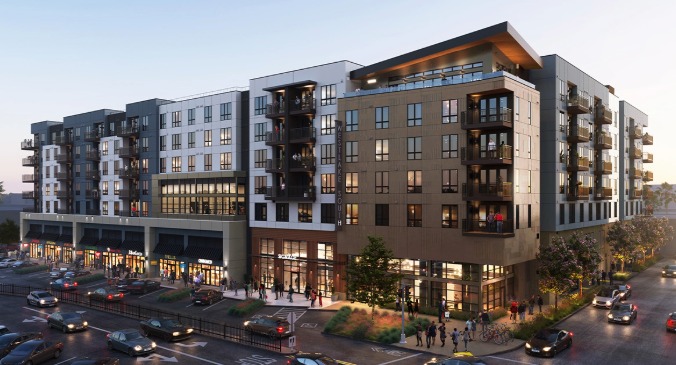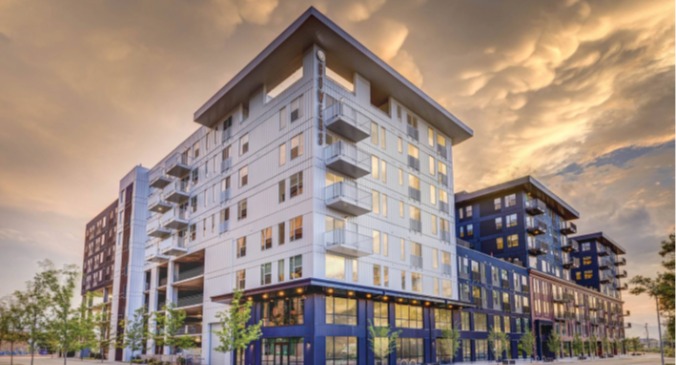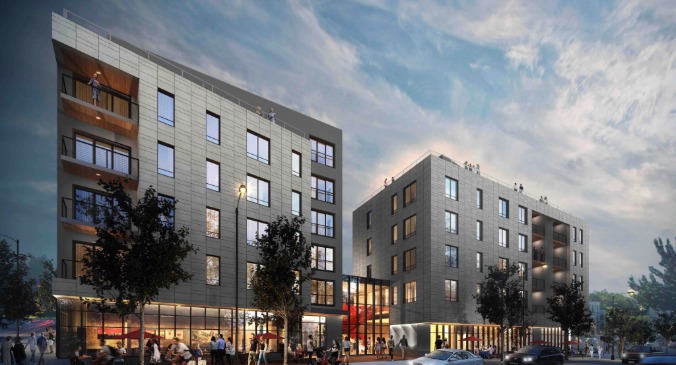Yield PRO TV presents NAHB Power Hitters. Host Linda Hoffman talks with Michael Novogradac, Managing Partner of Novogradac & Company LLP.
Transcript: NAHB Power Hitters interview. Linda Hoffman with Michael Novogradac, recorded September 17, 2021
(music)
Linda Hoffman: In this world, nothing can be certain, except death and taxes. Haunting words from one of our fearless founding fathers, Benjamin Franklin.
And rather timely. Especially as we stare down the barrel of a blow-the-doors-off spending bill. Don’t worry. It’s nothing the world’s highest corporate tax rate won’t fix. Never mind that profit is what made America. Profits build housing and breathe life into an economy, not to mention stocks and pension plans. What’s a country to do?
It’s not all doom and gloom, according to one accounting firm in San Francisco, California. In fact, they’ve estimated that the LI-TECH provisions—that is Low Income Housing Tax Credits—contained in the $3.5 trillion spending bill would finance an additional 138,000 affordable housing units per year over the decade, that’s presumably in addition to the current output of 93,000 affordable units each year.
But what do I know? Let’s speak with the guy that does this in his sleep. Today’s guest is the legendary Michael Novogradac, managing partner of Novogradac and Company based in San Francisco, California. Mike is an intersectional expert on all things tax and housing.
Mike, welcome to the show.
Michael Novogradac: Great, thank you, Linda. I’m pleased to be on the show. You do great work here.
Linda Hoffman: Thank you. Let’s ease in slowly. Many viewers may not be part of the tax credit world. What are the primary programs available for multifamily housing—and why should market rate builders consider them?
Michael Novogradac: Great. Thank you for that question. I agree, easing in slowly. This is definitely an arcane world. But arcane worlds create opportunities. So, the Low Income Housing Tax Credit was created by the Tax Reform Bill back in 1986. The Low Income Tax Credit is a subsidy that you have to apply for at a state allocation agency and it allows you to build units and rent them to low income families at restricted rents. And you end up creating a partnership with a corporation, either directly or indirectly through a syndicator where they invest for the tax credits. And then they enable the developer to move forward with the development.
There are two brands, two types of these tax credits. One is what’s commonly referred to as the 9 percent credit. And that’s a credit that you apply to a state agency for. The other has to do with tax and private activity bonds. And many of the developers, in their role out in the past, used private activity bonds to finance multifamily rental housing. Well, if you use those bonds and rent to low-income families a restricted rents, you’re also entitled to tax credits, as well. And that’s a lower tax credit, at 4 percent tax credit, which has been referred to in some of your prior episodes.
But those are the two foundational programs, private activity bonds with tax credits, or a straight Low Income Housing Tax Credit.
Linda Hoffman: LIHTC, in some form, dates back to 1986. How effective is it in providing affordable product to low-income groups?
Michael Novogradac: I think it’s been remarkably effective, as evidenced in the fact that it does go back to 1986. So, it’s the longest lasting formalizing program that anyone is aware of in the U.S. So, it’s been quite successful in its efforts.
And it does produce, combined within the two, close to 200,000 units a year of financing for affordable units. I think that the foundation of the success of the tax credit is that it is a public-private partnership. It does take a lot of the features of the private market, it puts in the hands of the private market development risk, lease-up risk, and ongoing operation risk.
And the beauty for the federal government is, the tax credits will only be available to the extent that the units are rented to low-income families at restricted rents. So, it’s a beautiful blend—a very well designed public private partnership that’s since been copied by other tax credit programs, most notably the New Markets Tax Credit.
I just want to also note that if you think about the impact that these incentives have had, since 1986—more than 3.5 million affordable rental homes have been financed through these incentives. And I would note that the National Association of Homebuilders estimates that more than 8 million low income households have been served by these rental homes. So, it’s been quite powerful and quite effective one.
Linda Hoffman: One criticism of LIHTC is that public housing authorities often follow the shiny object. That is, awarding funds to glitzy product. This means higher cost per unit, fewer units built. Is there a way to reform the program in order accommodate more people?
Michael Novogradac: Yeah, I would say that that is a common misconception about the Low Income Housing Tax Credit, and housing built by private activity bonds with the tax credit. And that’s just because when you look at the cost of units financed by these credit allocating agencies, or bond allocating agencies, and you compare them to, quote, market rate for non-subsidized, non-federally subsidized developments, you’re not really comparing apples to apples.
When you look at credit allocating agency finance developments, you’re looking at, you know, a process whereby a state agency has taken a given resource and said, how do I want to use this resource? I could either, A. serve the maximum number of families possible, or B. I could serve the most incomes possible, or I could provide the most supportive services and amenities possible. And each one of these end up affecting the overall unit count and the cost per unit. And state agencies have to basically go through and weigh these and pick some over the others and try to achieve all the outcomes and get the right balance.
And then I also note that when you’re looking at cost, you have to look at—there’s a lot of cofounding factors or variables if you’re trying to compare this with cost per unit. A lot of state agencies, like in California, they want to subsidize family units, so there’ll be more units that have three bedrooms. And obviously, a three-bedroom unit costs more than a two- or one-bedroom unit. They’ll also finance more development for support services amenities. A lot of the development is probably disproportionately have prevailing wage requirements, There’s a number of factors I could go through to that comparison. So, I don’t think of it they’re financing glitzy developments. I look at it as they’re financing developments that are competitive with market rate units, but are serving a unique set of populations that market units aren’t serving.
Linda Hoffman: I appreciate the clarity on that. It’s often different behind the curtain.
Michael Novogradac: Yes, it is.
Linda Hoffman: Opportunity Zones are relatively new. However, some of its provisions began to sunset even before program rules were completely in place. Also, results are mixed. How would you assess OZs? Continue, or reallocate funds?
Michael Novogradac: No. I definitely look to continue. In terms of the funds, one thing that has surprised me with Opportunity Zones is how much attention it gets relative to the cost. The actual ten-year cost is roughly $2 billion over 10 years. And I know that, typically, that’s a lot of money to me as an individual. But to the federal government, $2 billion—you just mentioned the $3.5 trillion spending bill—$2 billion isn’t all that significant. And just by way of comparison, I’m also a big supporter of like-kind exchanges. Like-kind exchanges cost roughly 4 billion a year, or 40 billion over 10 years. Opportunity Zones cost 2 billion, yet it gets all this attention, which is really unfortunate when you look at the impact Opportunity Zones can have.
And you mentioned, you know, we didn’t get the regs, and some parts were already expiring. To me, the real challenge is it took a while to get the regulatory guides on Opportunity Zones, and then you have COVID. So, we definitely, try to roll out a new tax incentive amidst the challenges that we were facing is definitely something I would prefer not have happened.
But, I did want to note that, by our estimates, of what we’ve been able to track, over $17 billion has already been raised. And that’s just what we can count. We think the real number is double or triple that. And of that, 14 billion is at least partially for multifamily housing. So, this has been a big source of funding for multifamily housing. We expect it to continue to be, for the near term.
Linda Hoffman: I’m also a fan. It’s good to hear the numbers.
Michael Novogradac: Yes. No. It’s quite powerful. I just wish it didn’t get as many of these anecdotal criticisms. Because there’s also anecdotes on successes, like with Solar Impact in L.A., Anniston, Alabama, Erie, Pennsylvania, There’s a number of others.
But one of the problems with Opportunity Zones, was when it was enacted, they had to take out—because of an arcane rule in the Senate—take out the requirement to collect data. So, we’re in this data void and we haven’t been able to get Congress to pass, through legislation, a requirement to collect that data.
Linda Hoffman: Wow. How do you do that without data?
Michael Novogradac: Kind of hard without data.
Linda Hoffman: Right. The New Markets Tax Credit seems to replicate the goals of Opportunity Zones. Which is more productive in bringing investment, including housing investment, into low-income communities?
Michael Novogradac: And that’s a great question. It’s one I get a lot as if it’s an either or scenario. And I always feel like saying, it’s like going to a contractor and saying, What’s more important, a hammer or a screwdriver.
And it’s like, well, tell me what I have to do and I’ll tell you which of those tools is most important. So, I really think that the New Markets Tax Credits and Opportunity Zones are complementary. And as evidence of that, Sen. Tim Scott, who is, in many ways, the father, along with Cory Booker in the Senate, of Opportunity Zones, is also supported New Markets Tax Credits.
And I would just say for the listeners and viewers, the New Markets Tax Credit is a deep subsidy that targets a particular business to make that business management viable, when it wouldn’t otherwise be. The Opportunities Zones basically blankets a low-income community with lower cost of equity capital. So, that the Opportunity Zone is more, sort of, ground up and more distributed across an entire zone. And the New Markets Tax Credit is more targeted to specific developments. So, the New Markets Tax Credit has more identifiable, sort of, successes, and it has many. I could talk about that for a while.
Opportunity Zones, since it’s more dispersed, it will take a while to see the community, or the longer community-wide benefits reveal themselves in economic data.
Linda Hoffman: Mike, I hope we can have you back. There’s just so much.
Michael Novogradac: No. I look forward to coming back. There are a lot more to talk about. I would just note that the tax bill, if it does make its way into enactment, does include a Neighbor Homes Investment Act provision, which would be a new tax credit for single-family home renovations in distressed communities. I know that would definitely be of interest to your listeners and viewers.
Linda Hoffman: Absolutely, especially single-family for rent.
Michael Novogradac: Yes.
Linda Hoffman: Mike, you are the smartest guy in the room on tax credits… says everyone. Thank you for helping us sort it out. The timing is quite fortuitous
Michael Novogradac: Great. Thank you for the opportunity and I look forward to coming back, and keep up the good work.
Linda Hoffman: Thank you. The first question on any deal is—does it pencil? Today’s deals—and the whole of any multifamily business—is complex. Creating success requires knowledge, skill… and a great accountant. And with the rumblings on Capitol Hill it won’t be simplifying any time soon.
Thanks for joining us. I hope you enjoyed our show. I’m Linda Hoffman. See you on our next exciting episode of NAHB power hitters.
(music)












